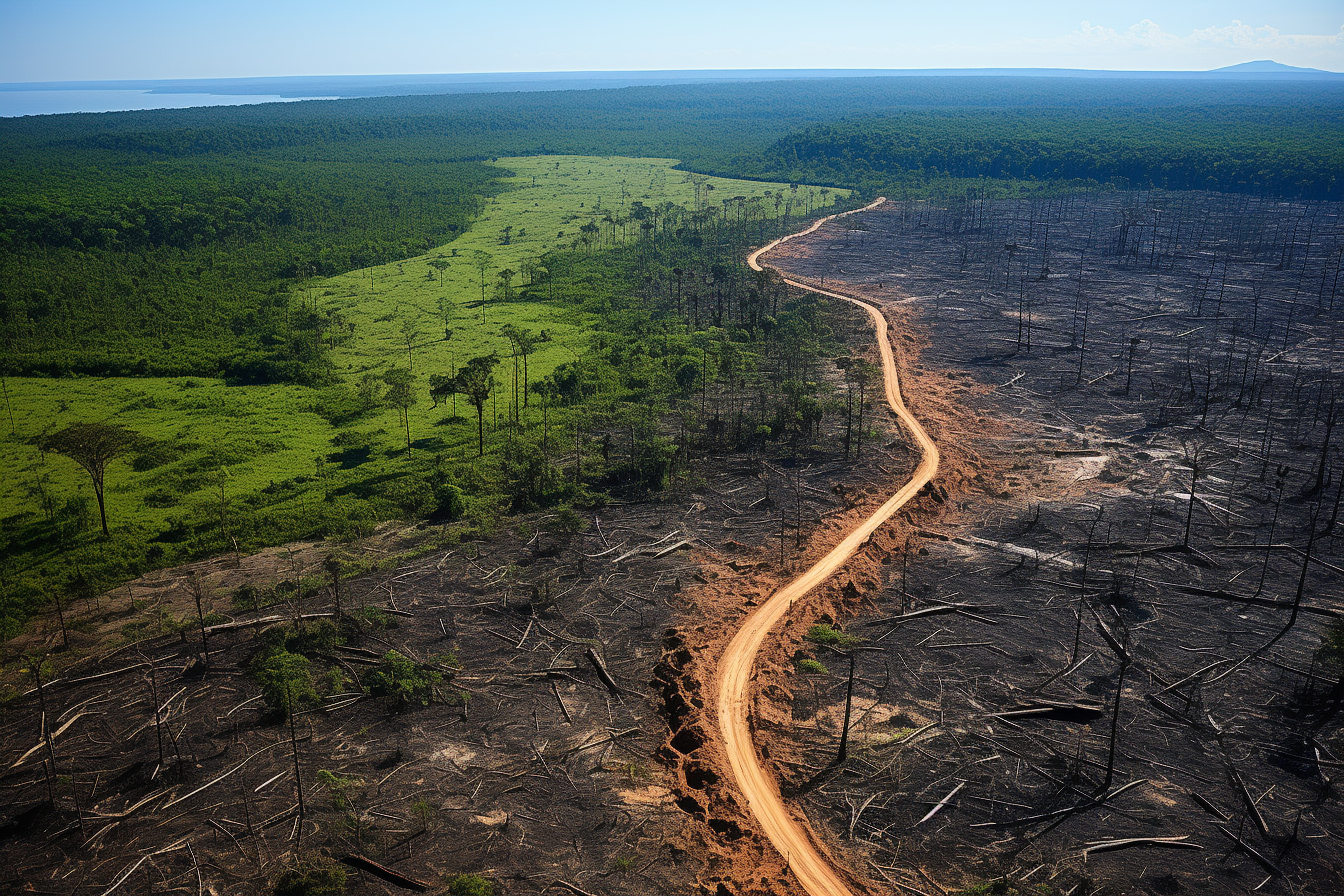Deforestation in the Amazon is a major problem that has repercussions on the biodiversity of this region. The Amazon is the largest reservoir of biodiversity on the planet and is home to around 10% of all known species. However, deforestation threatens the survival of thousands of species, including unique plants and animals.
Deforestation in the Amazon: a crucial issue for the survival of thousands of species
Deforestation in the Amazon has a direct impact on the survival of thousands of species. Rainforests are home to a wide variety of plants, animals and insects, many of which are found nowhere else on Earth. The destruction of their natural habitat has dramatic consequences on their survival. Animals that depend on the forest for food, reproduction or protection are seeing their territory shrink, their food sources disappear and their population decline. Plants, on the other hand, are often endemic species that can only grow under specific conditions. The destruction of their natural habitat can lead to their extinction. By destroying the forest, man is endangering thousands of species, some of which are still unknown.
Why is the fight against deforestation essential to preserve biodiversity in the Amazon?
The fight against deforestation is essential to preserve biodiversity in the Amazon. The rainforest is home to an incredible variety of plants and animals, including many endemic species. The disappearance of this forest would have dramatic repercussions on the ecosystem of the entire planet. The Amazon rainforest is a major player in the fight against climate change. It absorbs carbon dioxide from the atmosphere and stores it in its trees, plants and soils. By destroying the forest, we are destroying this key player in the fight against climate change. Deforestation in the Amazon is therefore a problem that affects everyone, because it has repercussions on the entire planet.
The socio-economic consequences of deforestation in the Amazon
Beyond its impact on biodiversity and the climate, deforestation in the Amazon also has profound consequences on local populations and the regional economy. Indigenous peoples, who have inhabited these forests for millennia, are seeing their traditional way of life disrupted, even destroyed, by the loss of their habitat. Forests are not simply reservoirs of biodiversity; they also represent a source of livelihood and a cultural base for millions of people.
The resources provided by the forest, such as fruits, nuts, game and fish, are essential to the survival of local communities. With the continued reduction of these resources due to deforestation, many families are forced to leave their ancestral lands to seek new opportunities in cities, leading to rapid and often unplanned urbanization.
In addition, deforestation has major economic repercussions. Although the conversion of forest to agricultural land may provide short-term economic benefits, in the long term it can lead to soil depletion and reduced agricultural yields. Forest soils are fragile and can quickly become unproductive without the protective cover of the forest.
Finally, deforestation compromises the ecosystem services that the forest provides, such as water purification, climate regulation and crop pollination. These services are essential for the well-being and food security of the region, but their value is often overlooked in short-term economic decisions.
The impact of deforestation on the culture and spirituality of indigenous peoples
The Amazon rainforest is much more than just a haven of biodiversity or a shield against climate change. For the indigenous peoples who reside there, it is the center of their cultural and spiritual universe. The trees, rivers, animals and spirits of the forest are deeply rooted in their myths, rituals and traditions. Deforestation, by upsetting this delicate balance, threatens not only their livelihood but also the very fabric of their cultural identity.
Every piece of the forest has a meaning, every sound, every movement is loaded with meaning. Elders have passed down these stories and knowledge for generations, ensuring the continuation of their traditions and strengthening the bond between man and nature. By losing the forest, an entire intangible heritage evaporates.
The spirituality of indigenous peoples is also intrinsically linked to the forest. Many of their rituals, dances and songs pay homage to the spirits of the forest, asking for protection, guidance or clemency. These ceremonies, which strengthen social cohesion and respect for nature, lose their relevance as the forest disappears.
In addition, certain plants, essential to these rites, are threatened by deforestation. For example, ayahuasca, a sacred plant used in shamanic rituals, is increasingly difficult to find due to the destruction of its habitat. This plant is not only a spiritual tool, but also a way for shamans to guide and heal their community.
The interdependence of forests and rivers: a balance threatened by deforestation
When we talk about the Amazon, we tend to focus mainly on the forests. However, what many are unaware of is the vital importance of the rivers that meander through these lush forests. These rivers and the aquatic ecosystems they support are equally crucial to the biodiversity of the region and to the life of local communities. Like forests, these freshwater systems are threatened by deforestation.
Amazonian rivers are home to an abundance of aquatic species, many of which are unique to this region. From fish like the pirarucu, one of the largest freshwater fish in the world, to freshwater pink dolphins, life thrives in these waters. However, deforestation disrupts the flow of these rivers, leading to increased sedimentation, modification of aquatic habitats and reduced water quality.
The forest and rivers work in synergy. Trees stabilize river banks, reducing erosion, while rivers provide water and essential nutrients to the surrounding forest. This close connection means that when the forest is threatened, so are the rivers.
For local communities, these rivers are not only sources of water and food, but also routes of communication and transportation. Many communities rely on fishing for their livelihoods, and disruption of the aquatic ecosystem can have catastrophic impacts on their way of life. Additionally, as water quality deteriorates, water-related diseases may increase, endangering the health of local populations.












